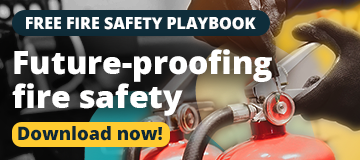
First-time fixes at scale: matching certified engineers to the right jobs
Four basics to move first-time fix up and rework down: certified person, context, parts, sensible routing. What to switch on in month one and how to measure the gains.
If you run FM service delivery, you know first-time fix isn’t a vanity metric. It’s the difference between a calm day, and a queue of chasing calls. It’s achieved by building a live database of engineer skills and certifications, asset history, and the parts that usually resolve each fault, then using that data in the planner every day to assign the right person, stage the right parts, and plan a sensible route. We have seen teams lift first-time fix by about 25%, and cut repeat visits the same way.
This article shows how to set up a first-time fix process without slowing down your operations. We will cover skills and certification tagging, how asset history and checklists on mobile remove guesswork, how parts planning cuts avoidable revisits, and how routing reduces miles without risking SLAs. There is a quick wins checklist for your first month so you can measure the change straight away.
Skills and certification tagging for scheduling
Too many rotas still depend on memory or a planner’s personal notes. A boiler job lands with the wrong ticket. An F-gas visit is given to a generalist. Nothing looks wrong on the board until the engineer arrives and has to walk away. That burns travel time, creates a second visit, and puts SLAs at risk on regulated work. It also drags your senior engineers into rescue jobs instead of the high-value tasks they should be doing.
In the UK, gas work must be carried out by Gas Safe registered engineers, and engineers are only qualified for the appliance categories listed on their ID card. It is not acceptable for a registered engineer to “sign off” work done by an unregistered person.
For F-gas systems, both the company and the individual person need certification to work on RACHP equipment.
What good looks like
Every job type carries the skills it needs. Every engineer profile has clear tags for trade, certification, and manufacturer approvals, with issue and expiry dates. When a dispatcher opens the planner, they only see engineers who meet the requirement. If the day moves, batch-shifting keeps those rules intact. Exceptions are rare and visible. Compliance can run a quick report that shows who did what, where, and with which ticket, without chasing paper.
Planned tasks align to recognised frameworks such as SFG20, the industry standard for building maintenance specifications, so required skills map cleanly to the work.
How to switch it on
- Define the skills you actually use: Gas Safe categories, F-gas scopes, electrical, lifts and doors, refrigeration, fire and security, and OEM approvals. Keep the list maintainable.
- Tag every engineer, and attach proof: Upload certificates with issue/expiry dates, set renewal reminders, and assign ownership for updates when people join, leave, or change role.
- Add required skills to the work: Put skill requirements on job types and PPM templates so allocation enforces competence; align templates with SFG20 where relevant.
- Set planner rules: Skills first, then proximity, then SLA.
- Review weekly: % of regulated jobs matched to certified engineers, blocked exceptions, and repeat visits linked to competence gaps.
Asset history, checklists, and parts on mobile
Engineers often turn up knowing the symptom, not the story. No recent faults, no last works, no record of what fixed it before. The checklist is in a folder, and parts are “to be confirmed,” so the first visit is a survey. It is sending someone in half-blind, and it shows up as lost time, extra miles, and missed SLAs.
What good looks like
On mobile, the engineer sees the asset’s last outcomes, photos, serials, and notes that matter. A short, mandatory checklist guides the inspection and the safety steps. Likely parts are pre-staged, either as a service kit or pulled from van stock. Costs flow back in real time, and the completed form lands in the logbook for audit without a chase. This aligns with asset-management best practice: accurate asset information available at the point of work across the asset life cycle.
Why checklists
Checklists cut errors in complex work. The WHO programme and a NEJM multicentre study reported significant reductions after adoption. Keep them short, clear, and field-tested.
Why parts and info matter
First-time fix improves when the engineer has the part, the skills, and the asset information on the first visit. High-FTF teams centralise service history and make it available in real time.
How to switch it on
- Surface useful history: Pin three items per asset: last fault and fix, status and age, and access notes.
- Standardise checklists: Short forms for your top ten jobs, mandatory at the right moment (visit or asset).
- Pre-stage parts: Link likely spares to job types as kits, and keep “always-needed” items in van stock.
- Capture costs as you go: Make time, parts, and expenses mandatory on completion; use auto-accept where sensible.
- Close the loop: Share forms and photos via your portal so stakeholders self-serve, and stop ringing the desk.
Reduce repeat visits and travel with better allocation
The day moves, access windows shift, and jobs are scattered across a wide territory. Work gets thrown to whoever is free, not the best fit. Travel balloons, SLAs wobble, and engineers arrive without the part the job really needs – kick-starting a queue of revisits.
What good looks like
Allocation respects three things, in order: skills, geography, and SLAs. Jobs are clustered by area within the territory to cut windshield time, with sensible buffers for traffic and site delays. The planner can batch-move work when a site slips, without breaking skill rules. Engineers have a primary territory where it makes sense, and a clear cap on daily miles or minutes. Parts are staged ahead of the route, so the plan is achievable without a second visit.
How to switch it on
- Set simple rules: skills → proximity → SLA.
- Cluster by area: tight routes within the territory; expect fewer miles (e.g., 10–14 per driver per day at fleet scale).
- Use time windows: agree arrival windows, add short buffers.
- Batch-move with intent: when a site slips, move the cluster, and backfill nearby work.
- Create light territories: give each team a primary territory, review exceptions weekly.
- Stage parts before routing: confirm kits and van stock the day before.
- Protect the end of day: keep one reserve slot for overruns or urgent calls.
- Measure what matters: miles or minutes per job, first-time fix, and revisits citing “no part,” or “wrong skill.”
GKR snapshot
Operational control during rapid growth
Situation
GKR was scaling fast and outgrowing a legacy CAFM. They needed a single platform to streamline scheduling and dispatch and to integrate tightly with accounts.
What changed
- Moved to Joblogic to support rapid scale, including a ~500% workforce expansion.
- Streamlined scheduling and dispatch, and integrated operations with accounting.
- Switched from paper to digital compliance forms, with AI-assisted report creation from onsite data.
- Adopted QR code asset management for faster access to records.
- Standardised the mobile app for real-time job info and simpler onboarding.
- Enabled automated invoicing on job completion, with real-time job tracking.
The impact
- Greater operational transparency and accuracy, with reduced admin and faster coordination between field and office.
- A platform that scales with growth while improving compliance and workforce engagement.
The next step: Measuring impact
Track these metrics on your pilot teams for 8–12 weeks:
- First-time fix (FTF) and repeat-visit rate with reason codes.
- Miles or minutes per job, and SLA attainment on regulated work.
- Job-to-invoice days, now that capture-as-you-go is live.
Publish the before-and-after, then roll out.
Conclusion
First-time fix improves when the basics live in your system: who can do what, what each asset has seen, which parts fix it most often, and routes that respect all three. Keep that data current, and the day gets quieter: less travel time, fewer repeat visits, steadier SLAs.
With skills and certification tagging, asset history, and short checklists on mobile, staged parts, and territory-based routing, you turn first-time fix into a habit rather than a hope.
Book a tailored demo to see how skills, history, parts, and routing can work for your business.

Book a demo today!
Speak to our product experts to see how the Joblogic features adapt to fit your business and workflows
*No hard sell, no commitment


.png)
